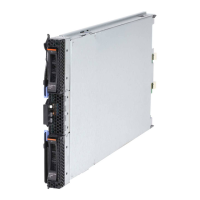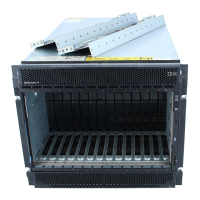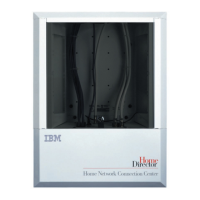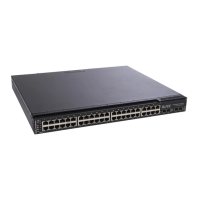ports configured as half- or full-duplex do not negotiate.
A
Root
B
C
Blocked
Port 1Port 1
Port 1Port 1
Port 1Port 1
Port 2Port 2
Port 2Port 2
Port 2Port 2
Designated
Half-duplex
Full-duplex
Collision
BPDUs
Discarded
In the preceding example, port 1 on bridge B is configured as a full-duplex port and
port 1 on bridge A is either configured as a half-duplex port, or left in
auto-negotiation mode. Because port 1 on bridge B is configured as a full-duplex
port, it does not do the carrier sense when accessing the link. Bridge B will then
start sending packets even if bridge A is using the link. A will then detect collisions
and begin to run the flow control algorithm. If there is enough traffic between
bridges B and A, all packets (including BPDUs) will be dropped. If the BPDUs sent
from bridge A to bridge B are dropped for longer than the Max. Age, bridge B will
lose its connection to the root (bridge A) and will unblock its connection to bridge C.
This will create a data loop.
Unidirectional link
Unidirectional links can be caused by an undetected failure in one side of a fiber
cable, or a problem with a ports transceiver. Any failure that enables a link to
remain up while providing one-way communication is very dangerous for STP.
134 IBM BladeCenter 4-Port Gb Ethernet Switch Module: Installation and User’s Guide
